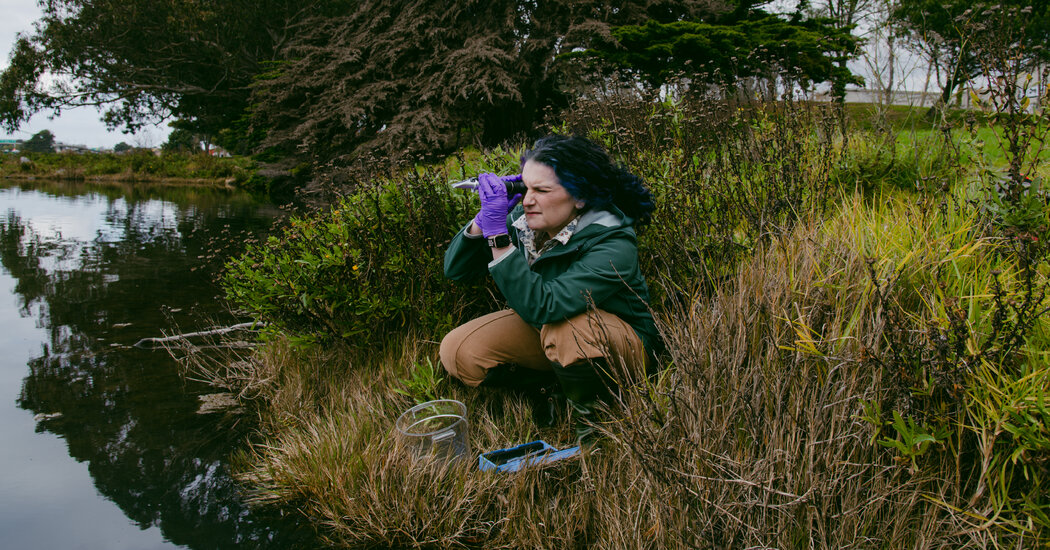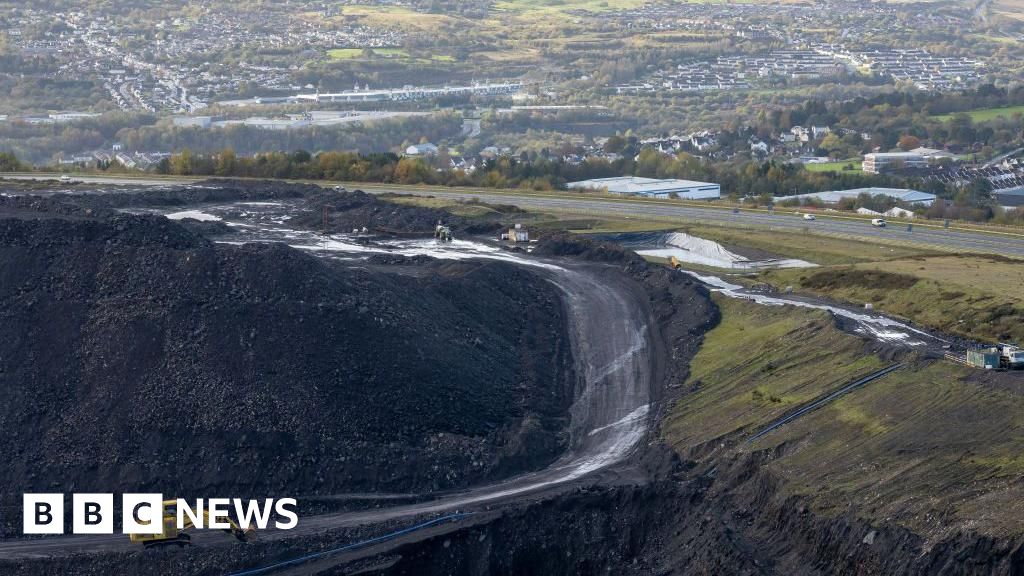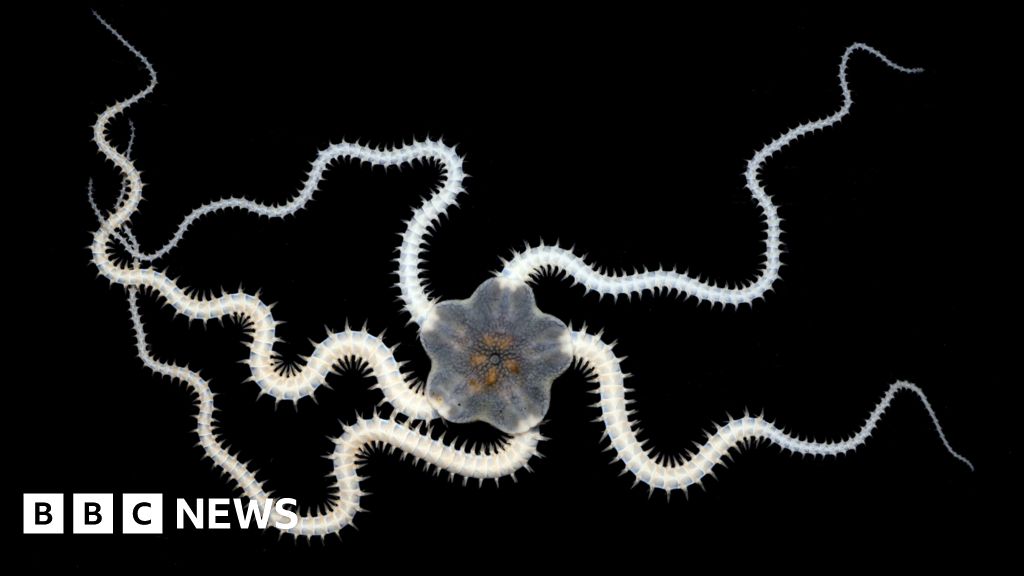
Her Discovery Wasn’t Alien Life, but Science Has Never Been the Same
- Science
- February 11, 2025
- No Comment
- 86
With TV cameras pointed at her, Felisa Wolfe-Simon began speaking at NASA Headquarters in Washington, D.C., on Dec. 2, 2010.
“I’ve discovered — I’ve led a team that has discovered — something that I’ve been thinking about for many years,” Dr. Wolfe-Simon said. She was at that time a visiting researcher with the U.S. Geological Survey, speaking to a sizable audience of journalists and bloggers, two of them wearing tinfoil hats, and hordes of streamers online.
Days before, NASA had teased “an astrobiology finding that will impact the search for evidence of extraterrestrial life.” Speculation that NASA had discovered some kind of alien life bred exponentially across nascent social media platforms.
Dr. Wolfe-Simon had, unfortunately, not found aliens, nor had she ever said she did. But she had found a terrestrial organism that was behaving unlike any life form known on Earth.
The creature came from the mud of Mono Lake, a body of water near Yosemite National Park that is nearly three times as salty as the Pacific Ocean. The lake has the pH level of glass cleaner and, most importantly for her team’s discovery, is full of toxic arsenic.
All known living things use six major chemical elements to keep their bodies churning. One is phosphorus. But from Mono Lake, Dr. Wolfe-Simon’s team said they had isolated an organism that could replace phosphorus with arsenic.
“I’d like to introduce to you today the bacterium GFAJ-1,” she proclaimed. A picture of magnified black and white cylinders appeared on the screen.
“We’ve cracked open the door to what’s possible for life elsewhere in the universe,” Dr. Wolfe-Simon said. “And that’s profound.”
“It sounds to me like you’re going to need to go out and find a new textbook to teach all those students about what elements are used to build life,” said another panelist, Mary Voytek, director of NASA’s astrobiology program, a funder of the discovery.
“I don’t know about a whole new textbook,” said James Elser, a professor at Arizona State University, also on the panel. “But certainly some paragraphs and sentences are going to have to be rewritten.”
Dr. Wolfe-Simon piped in.
“Give me some time, Jim,” she said. “I’m at the beginning of my career.”
Dr. Wolfe-Simon did not change fundamental biology, but her announcement pointed to a change in how science would be conducted. Researchers trekked down from the ivory tower to have disputes and discussions in the digital open on blogs and in social media. Information flowed under the hashtag #arseniclife, shaking up traditional methods of evaluating truth and rigor in research.
The saga highlighted the internet’s possibilities for open discourse and real-time peer review. But it also revealed the perils of the medium, as Dr. Wolfe-Simon faced sustained personal attacks. She hasn’t really been part of scientific society since.
During those ensuing years, critics have persistently called for her paper’s retraction. And now, more than a decade later, that retraction is being pursued by the prominent journal that published her team’s work. They continue to defend the work’s integrity.
At the same time, Dr. Wolfe-Simon is resurfacing with new experiments that ask fundamental questions about how, exactly, life works — and if the answers are different from what’s in today’s textbooks.
Dr. Wolfe-Simon had been thinking for years about life that might substitute arsenic for phosphorus before she went out in search of it. In 2009, among limestone turrets and buzzing flies, she plunged clear plastic tubes into Mono’s mud, gathering samples.
She eventually isolated GFAJ-1, which her 11 co-authors agreed could incorporate arsenic into the molecules that make up its biology — proteins, fats and nucleic acids, which include DNA.
She and her team submitted their paper to Science, the journal that has published such major discoveries as a sequence of the human genome and evidence of ancient water on Mars.
Editors then sent the manuscript out for peer review, in which outside experts evaluate and poke holes in a paper. The analysis that came back was positive, enthusiastic, as the science journalist Dan Vergano reported in USA Today after he received the records from NASA under a Freedom of Information Act request.
NASA was also enthusiastic.
“Back then, we used to have something called a murder board,” said Dr. Voytek, where people assessed the rigor of unpublished scientific results.
At the #arseniclife murder board, the team decided to move forward, even though they were aware of some fuzziness in the results. “We understood that this wasn’t conclusive,” Dr. Voytek said. “We understood it was suggestive.” They thought the uncertainty might inspire future investigation.
Soon after came NASA’s ET news release and the flashy news conference.
Holden Thorp, the current editor in chief of Science said the journal’s editors weren’t aware of NASA’s framing. “The use of the word ‘extraterrestrial’ was not something we picked up until it had already gotten away from us,” he said.
And get away it did.
The hype around the paper soon made Dr. Wolfe-Simon, as we say today, the internet’s main character. After the announcement, she delivered a TED Talk, sat for an interview with the magazine Glamour and was one of the Time100.
For a couple of days after the news conference, the response was positive. But then blogs run by scientific researchers called attention to methodological concerns with the work and brought doubt to the conclusions.
There was too much contaminating phosphorus in the samples, some said. Other critiques noted that when the team put the bacterium’s DNA in water, the arsenic they said was present should, chemically, have fallen apart.
In the past, such critiques would have appeared in journal papers published months later. Normally, says Gunver Lystbaek Vestergaard, a science journalist who studied the #arseniclife saga as a visiting scholar at Cornell University, the frank discussions leading to those articles would have happened behind closed doors.
With #arseniclife, they propagated through blogs and Twitter, outpacing the usual speed of science. The public watched science play out as a process, complete with arguments and conflicting interpretations, rather than existing as a set of settled facts.
Anyone could see scientists, from their personal accounts, questioning the quality of research published in one of the world’s most esteemed journals. The events pulled power from the scientific clergy and put it in the hands of congregants.
And they were being taken seriously. One critic who poked holes in the finding on her blog later published a peer-reviewed response in Science.
“We’ve never seen anything like it,” said Dr. Vestergaard, who studied #arseniclife for her forthcoming book “Our Living Universe.”
Soon, prominent science journalists picked up on the controversy. News coverage shifted, highlighting the critiques of #arseniclife, and of Dr. Wolfe-Simon. Some science journalists did serious reporting on the controversy, but less rigorous write-ups followed. “There’s a lot of just copy-pasting and referencing each other’s work without doing any independent research,” Dr. Vestergaard said.
“The whole media frame just changed over a day or two,” Dr. Vestergaard added.
This upending of scientific evaluation hasn’t translated to large-scale changes in formal peer review, but it does endure online: For instance, in the early stages of the COVID-19 pandemic, scientists cached papers online and let the crowd do peer reviewing.
That had cons — high-profile but incorrect results making headlines — and pros, like merging general and scientific audiences. The public got “access to research material of immense topical interest,” according to an analysis in The Lancet.
But the traditional, private process had long made scientists feel safe, giving them an ability to shape narratives about emerging science. Once it was gone, so was the neat boundary. “The formal communication lines in science lost control,” said Linda Billings, a communications consultant who worked with NASA on the 2010 announcement. “And I don’t think they’ve properly regained that control.”
Some experts say this was probably a good change: If public institutions — or scientists doing the work — could fully control a story, science could become propaganda. Journalists, other scientists and the public, they say, ought to be able to ingest and interpret results independently.
But the #arseniclife team wasn’t ready to embrace that openness at that time. Dr. Wolfe-Simon’s adviser and co-author, Ron Oremland of the United States Geological Survey, told the group to respond to critiques in peer-reviewed journals, shutting down what many saw as productive, open debate.
“This was not an effective strategy in this case given the ‘viral’ nature of the response,” said Thomas Kulp, another of the study’s authors and an Earth science professor at Binghamton University.
The quiet didn’t sit well in the blogosphere, nor did Dr. Wolfe-Simon’s brief moment of scientific celebrity.
Critique soon became attack, and attack often became personal — focusing, for instance, on Dr. Wolfe-Simon’s appearance, including her dyed hair.
“It was this wave that happened every week,” she said of the negative publicity that resulted.
“It was just awful,” she recalled. “It was really, really awful.”
Dr. Thorp, who wasn’t editor in chief of Science at the time, said not enough had been done to defend Dr. Wolfe-Simon against online vitriol.
“I think there’s probably more that Science could have done, by speaking out against that and by also moving more quickly and with greater transparency,” he said. Bruce Alberts, who led Science from 2008 to 2013, declined to comment.
Although there were benefits to the open discussion, Ariel Anbar, a professor at the School of Earth and Space Exploration at Arizona State University and an author on the paper, said the outcome of the #arseniclife debate had also revealed the Internet’s drawbacks.
“It’s a culture that moves fast but breaks people,” he said.
Dr. Wolfe-Simon left Dr. Oremland’s lab soon after the paper was published. She briefly found a new base at Lawrence Berkeley National Laboratory.
It was difficult that her co-workers knew her from the internet. And soon, Dr. Wolfe-Simon said, she couldn’t get grants or publish papers; she couldn’t adjust to the toxic waters. “I became radioactive,” she said.
And so, after her time as main character was over, Dr. Wolfe-Simon pivoted: Trained as an oboist, she started a music performance master’s degree in 2013 while pregnant with the first of her two children.
Music has been her steadying bass throughout her exile. She performs professionally and teaches part-time. Her basement, stuffed with sheet music, held a guest room for visiting musicians, a music studio and a station dedicated to handmaking oboe reeds, a woody collection tagged and organized just as lab equipment would be.
She took jobs like organizing science seminars for Mills College in Oakland, helping biotech startups and working in bakeries. She referred to that as “industrial microbiology.”
“When you do manual labor, people are less likely to look at you on the internet,” she said.
Usually, professional consequences so severe are reserved for those who fabricate data or commit fraud, which no one has alleged with #arseniclife. Why, then, were the repercussions so resounding for Dr. Wolfe-Simon?
Some said that being a woman in science, at an early stage of her career, had led to harsher treatment. As Dr. Wolfe-Simon describes it: “I’m little. I’m enthusiastic. I present my science as if I were a man.”
She also defended the discovery against scientific consensus. Some see that as an unwillingness to change a conclusion in the face of new information. Dr. Wolfe-Simon would say that information is wrong.
Adherence to contested conclusions has not been a disqualifier for others.
In 1996, David McKay, a NASA scientist, and colleagues published a paper positing that features on a meteorite from Mars could be evidence of alien life, including fossils of microbes. The result led to an announcement by President Bill Clinton at the White House, followed by much controversy in the field of astrobiology. Dr. McKay’s career thrived thereafter, and the scientific arguments spurred the field of astrobiology forward.
But the #arseniclife debate happened when the internet was much faster and more public. And with Dr. Wolfe-Simon serving as the face of the discovery — something she wanted — the consequences when that went poorly were high.
“The internet never forgets,” Mr. Vergano said.
To this day, Dr. Wolfe-Simon defends the work, noting that she wishes the team had saved less data for a second paper. The team published a response to critiques in Science, and Dr. Wolfe-Simon disputes failed replications of their findings. Other co-authors say they also stand by the integrity of the original work.
But the editors of Science have signaled that they no longer support the research or its conclusions.
“We feel the best thing to do would be to retract the paper,” Dr. Thorp said.
The journal notified Dr. Wolfe-Simon and her co-authors about that feeling soon after a reporter with The New York Times requested an interview in late October. Discussions regarding a retraction are ongoing.
Dr. Thorp says Science can’t justify the idea that #arseniclife is arsenic life, and he says that the original peer reviewers didn’t have the right expertise in biochemistry to evaluate the paper.
“In 2012, it was much more common that papers would only be retracted if there was misconduct or if the authors requested it,” he said. A dozen years later, Dr. Thorp says norms have evolved, and journal editors can retract papers when they believe the findings are unreliable.
Steve Benner of the Foundation for Applied Molecular Evolution thinks the process initially functioned as it should have.
“Science published several papers arguing interpretations different from what Felisa made,” he said. “The community now has the information needed to draw a conclusion.”
The controversy is resurfacing as Dr. Wolfe-Simon is poking back into scientific civilization. She is interested in science that seeks patterns in nature. “‘What is life?” she said. “What is it made of? How does it work?” In 2024, she received funding through a NASA workshop for a project that questions assumptions about how living things produce energy.
Dr. Wolfe-Simon is pursuing her ideas in lab space at a research facility in Oakland. On an October morning, streaky purple hair standing out, Dr. Wolfe-Simon showed her sample tubes, scrounged from surplus supplies, in drawers labeled with pink tape on which her name is written. A heart hovered over the “I” in “Felisa.”
Dr. Wolfe-Simon is investigating magnetotactic bacteria — organisms that create magnetic crystals inside their bodies and respond to north-south pushes and pulls.
“And you’re like, ‘Well, that’s an interesting party trick,’” she explained. “‘Why?’”
The prevailing thinking is that magnetism helps the bugs navigate to areas with their preferred level of oxygen.
Dr. Wolfe-Simon wonders if there is a different explanation.
Perhaps, she said, they use a magnetic field to generate current, and use that current to generate energy. Right now, scientists know of two kinds of organisms: those that get energy from chemical reactions, and those that get it from light. If living beings could also keep themselves alive using magnetism, that would add new ideas about how life works.
“Could this be something in plain sight?” she wondered.
Dr. Wolfe-Simon grabbed a magnet and a sample of mud she pulled out of the Berkeley Marina and prepared a slide.
Soon, through the eyepiece of a microscope, Dr. Wolfe-Simon could see tiny beings wiggling as they followed her magnet, as if on command. “They’re so cute,” she said.
She’s excited to dip back in to science’s muddy waters. “I think that I have other contributions,” she said.
And now, she said, she’s coming at the experiments from a different place: In 2010, she was trying to solidify and advance her place in the scientific world. “Today,” she said, “I have nothing to lose.”
If she made an unconventional discovery about magnetic life, she wouldn’t pursue a flashy journal that would impose a heavy hand in publication and press, she said. She would aim for more independence and try to provide agar for others’ follow-up work.
“I’m focused solely on doing good science for its own sake,” she said. “That freedom allows me to engage more directly with journalists and others without feeling constrained by the arbitrary rules and norms that failed me in the past.”
She has faith in science as an endeavor, she said.
Even when the structures upholding that endeavor — and the humans who built them — aren’t as ideal as they are in the pages of textbooks.
#Discovery #Wasnt #Alien #Life #Science









